One of the many benefits of installing security cameras in your home is being able to see what’s going on in and around the house even when you’re not there. Whether you want to check your pets and kids’ whereabouts while you’re at work or keep an eye on your valuable things, a home security camera is a helpful tool to give you a peace of mind.
If you are planning to invest in a security camera, you will find so many options in the market today. Gone are the days of unsightly wires running on walls because most security cameras nowadays are wireless, making them more flexible and easier to install. It can be a bit overwhelming, there are so many options!
Before you invest in a wireless security camera that you’ll be using every single day, spend a few minutes with us to learn the different wireless options available so that you will know which product will best suit your needs.
What does wireless mean for this article?
When you think wireless, you probably imagine a camera stuck up on a wall, with no wires running to it, right? Well, you might be disappointed!
If that’s what you’re looking for, you want battery powered cameras. We covered battery powered cameras with no wires in depth in another article. In this one, we’ll be focusing on cameras that pass their data over wireless connections, but they may still have wires to connect to an outlet for power.
First, we’ll be talking about the most common cameras, WiFi cameras.
Then, we’ll cover cellular security cameras that use the same networks as a smartphone and don’t require a local internet connection.
WiFi Security Cameras
When we hear the word WiFi, we often associate it with devices connected to the internet and security cameras are no exception. A lot of homeowners and even companies have embraced the use of WiFi security cameras to protect their valuables and properties because they are easy to install. As long as you have a high speed internet connection, you can get live footage of your properties even when you’re on the road.
WiFi security cameras work by downloading software that comes with the WiFi camera. You can install the software to your PC or smartphones to track and record activities remotely. Each camera is assigned with an IP address on your network so you can access the video or captured images over the internet. Some cameras can also be configured to automatically send the recordings to an email address.
The next question is, are WiFi security cameras worth it? The answer totally depends on your budget and preferences. There are no perfect products. Below, we will show you the pros and cons of WiFi security cameras.
Pros of WiFi Security Cameras
Easy to Install
WiFi cameras are wireless and you can easily set them up anywhere as long as they are near to a power outlet (if your camera is not battery-operated). You can place the camera on a tabletop or install them outside your home so you can protect your properties from intruders. Just be aware that you’ll have a limited reach from the outlet, and you may have to investigate another plan to power the cameras if an outlet isn’t nearby.
Low Cost
Nowadays, you can find many low-cost WiFi cameras because you don’t need to hire a professional to do the installation. Since the cameras don’t require Ethernet cables, unlike wired networks, it makes them easier to install and relocate. If you don’t mind cheap Chinese electronics, entry level cameras with poor image quality start at around $30.
Live Streaming to Your Smartphone via the Internet
Almost everyone has access to the internet. As long as your camera is connected to your network, you can easily get live streams of your properties whenever and wherever you are. The videos and images are often also backed up to the cloud so that you can have the option to access them online later. Also, most cameras have motion sensors and only record footage once they detect movements within the area of interest so that you can save bandwidth uploading videos and space on cloud servers.
Flexible
Wifi cameras are wireless and can be easily picked up or moved anywhere you want since they don’t need wired connections to transmit data. Just make sure there’s an outlet close by unless you purchase a battery-powered camera!
Cons of WiFi Security Cameras
Cameras won’t work without a WiFi signal
As the name suggests, WiFi cameras work only as long as there is a WiFi signal. Therefore, if the signal strength in part of your home is weak, you may notice lag to access live videos or receive captured images when you’re away. There are many things that can degrade WiFi signals. Obstructions such as walls, furniture, and metal can degrade the WiFi signal, causing slower connections, lower video quality, or failure to access camera footage.
Some cameras are not totally “wire-free”
Unless you’ve purchased a battery-powered camera, most WiFi cameras will still require a wired connection to the outlet to power it up. This might disappoint people expecting a completely wireless camera.
WiFi signal can be easily jammed
Nowadays, there are many ways to purposely jam a WiFi signal which intruders could use to break into a home. You can easily buy a wireless camera jammer or even build your own WiFi jammer using a smartphone or wireless landline phone.
Now granted, most burglars are NOT that sophisticated. They’ll just opt for a baseball cap or a hoodie. But, when a way to defeat your cameras is as cheap as $30-$50, you have to consider that some criminals will take advantage of it.
So, if you are using a WiFi camera for security purposes, make sure you have a layered security system. Jammers can easily block a WiFi signal, including bluetooth and GPS which intruders can use to break into your home.
WiFi is relatively easy to hack if not configured properly
Perhaps you’ve heard about the horrors of hackers getting live footage of a home using a WiFi camera. Or you have seen movies where the bad guys replace the video feed with a fake feed. If you have a hardwired system, the hacker would have to splice the wire, set-up a device between the camera and the viewer, and get a web address for that device without anyone knowing it. But with WiFi cameras, hacking is made easier since you only need to copy the address of the end device and send data using the same format once you penetrate the network.
But you might as well ask, why would hackers be interested to get a live footage of your home? Aside from possibly learning your routines and breaking into your home, some hackers might be more interested in your personal details.
So What are the Best WiFi Security Cameras?
|
Product |
Pros |
Cons |
Reviews |
Price |
|
|
4.1/5 |
$299 - $349 |
|
|
|
4/5 |
$199 |
|
|
|
3.5/5 |
$180 |
|
|
|
3.5/5 |
$230 - $320 |
|
|
|
3.4/5 |
$56.99 |
|
|
|
2.7/5 |
$139.99 - $239.99 |
Nest Cameras
Price: $299 - $349
Review: 4.1/5

The Nest cameras come in two models - the Nest Cam IQ Outdoor and Nest Cam IQ Indoor. The Nest Cam IQ Outdoor is suitable for monitoring outside your home. It is built with person alerts feature that sends you alert notifications and a snapshot when it detects someone moving within its field of view. On the other hand, the Nest Cam IQ Indoor is designed for indoor security of your home. It has built-in Google Assistant to give you a helping hand around the house. Both the Nest Cam Outdoor and Indoor have 1080 pixel resolution, 12x digital zoom, light ring, two-way communication, and night vision.
Pros:
- Has excellent built-in facial recognition
- Two-way communication
- 1080 pixel high quality video
- Has built-in sound and motion detection
Cons:
- Requires Nest Aware subscription
- Expensive
Ring Spotlight Camera
Price: $199
Review: 4/5

The Ring Spotlight camera is a popular cam acquired by Amazon and packed with amazing features you would want in a camera. It is an ideal outdoor security camera with a bright spotlight, built-in motion sensor that is triggered with audio or motion, and two-way audio communication. The Ring Spotlight ensures that you are able to get high quality footage of the most vulnerable areas outside your house.
Pros:
- Easy to install
- Two-way audio
- Integration with Alexa or IFTTT
- Comes with bright spotlight
- Motion-triggered video recording
Cons:
- Cloud storage subscription is needed
- No pre-buffering
Netatmo Welcome
Price: $180
Review: 3.5/5

If you are looking for a stylish and wireless indoor camera, then the Netatmo Welcome is a good choice. The cam is enclosed in a slick cylindrical shape casing that looks like a power bank, making it perfect on table tops or drawers. On top of it, the camera also features an alert notification system that detects unknown person inside your home, sending you an alert with facial image and video recording. Its facial recognition system will help determine who is inside your home.
Pros:
- Stylish, cylindrical casing
- Comes with smoke or fire notification alert
- Smart facial recognition system
- Works with Google Home Assistant
- Allows multiple people to manage the camera and be integrated with geofencing
- Backs up recordings to the cloud
- No subscription fees
Cons:
- Can only be powered via a cable
- Doesn’t offer two-way audio
- Can only be installed on flat surfaces
Blink Series
Price: $230 - $320
Review: 3.5/5
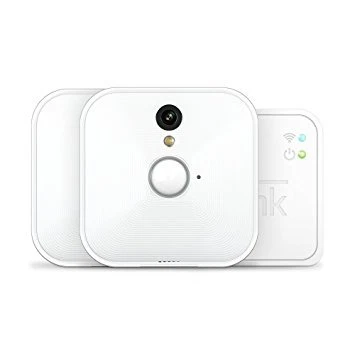
The Blink cameras come in two variants - the Blink and Blink XT (check out our Blink XT review here). This series of cameras were developed by Blink (now owned by Amazon) and boasts features such as being slick, classy, lightweight, weatherproof and compact packaging, and low power consumption with 2AA batteries enough to last up to 2 years.
The Blink series of cameras come with 2 hours of free cloud storage of video recordings. You can even integrate Alexa to enjoy additional features of a smart home.
Pros:
- Easy to install
- Low power consumption
- No monthly fees
- Integration with Alexa
Cons:
- Poor night vision
- No two-way audio
- Limited cloud storage options without fees
- Requires additional smart hub
D-Link DCS-936L HD Camera
Price:$56.99
Review: 3.4/5
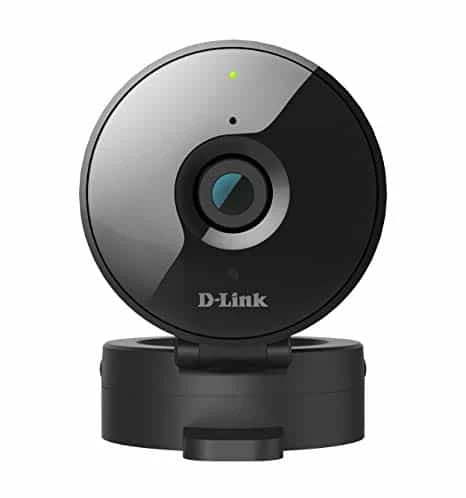
The DCS-936L camera by D-Link is cleverly designed with a matte black casing to blend perfectly in dark shadows, making it inconspicuous for burglars. The ring around its base allows you to swivel and its lens rotates so you can point it to directions you want to capture. Overall, the DCS-936L camera captures high quality video with wider angle of view. Aside from the microSD, your videos can also be pushed to the NVR or networked video recorder to backup your files in case intruders would steal the camera.
Pros:
- Compact design with a matte black casing
- Provides high quality and wide angle video
- Lens can be rotated
- Recordings can be automatically backed up using NVR
- No monthly subscription payments
Cons:
- Doesn’t provide two-way audio
- No cloud storage backup
FLIR FX
Price: $139.99 - $239.99
Review: 2.7/5
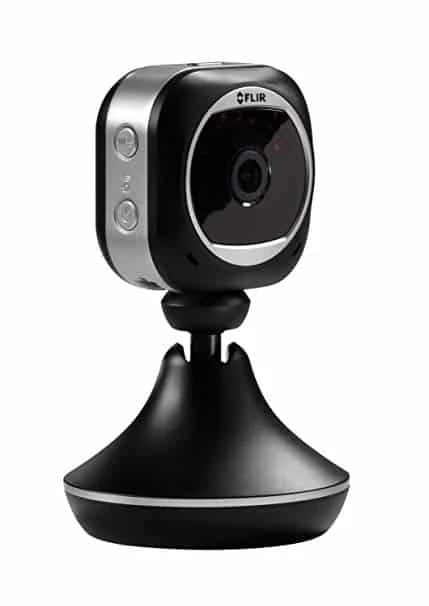
The FLIR FX series of cameras are designed for indoor and outdoor setup. The cameras are optimized for mobile activities - you can even mount the camera on a helmet and the casing is waterproof. Some features include smart alerts, cloud storage of up to 30 days worth of video recordings, night vision capabilities, and HI-DEFINITION footage.
Pros:
- Night vision capabilities
- Waterproof casing
- Ideal for mobile recording
- Cloud storage worth 30 days of recordings
- Can be powered through a USB port
Cons:
- Low battery life
- App glitches
- Limited third-party integrations
Cellular Security Cameras
Sometimes, WiFi may not always be available for remote monitoring, especially if you want to keep an eye on your properties in areas that do not have access to the internet. The good news is that there is another option where you can wirelessly access live footage of your valuables even without WiFi.
Cellular networks are almost everywhere these days. Cellular cameras are designed to use mobile networks in monitoring your space. Although some cellular cameras can be pricey compared to WiFi cameras, they can be worth your investment if you need to monitor your property on areas where only mobile service exists. The cameras are optimized to upload videos and images so you can access footage anywhere you are and keep an eye on important valuables or assets even without a WiFi signal.
They can be great for:
- Remote workshops
- Barns
- Land without structures or homes
- Mobility, keeping an eye on a place of interest temporarily without any setup
Pros of Cellular Security Cameras
Easy Installation
Just like any wireless cameras, cellular cameras are easy to install because they don’t need a wired network to function. You can easily set up your camera without the need of a professional. Simply download the app that comes with the camera so that you can remotely monitor what’s happening out there while you’re on the road. Make sure that you insert a working sim card to your camera so that it can connect to the mobile network.
Flexibility
Most cellular cameras are intended for outdoor applications and that is why they are powered with batteries, sometimes in combination with solar panels. As long as there is 3G/ 4G LTE/ 5G network in your area, you can install the camera anywhere you want. If you decide to move the camera to a new location, you can easily take it down and reposition to a new site.
Works without the Internet
The best thing about cellular cameras is that they work without the internet per se, which is one of the main disadvantages of WiFi cameras. Mobile networks are everywhere unlike WiFi signal which may not be always available in some areas. Using a sim card, cellular cameras can connect to a mobile network and send live footage directly to your smartphone.
Safe and Secure
Unlike WiFi signal, cellular signals are less susceptible to hacking, primarily because it’s not as attractive a target as more common WiFi and Ethernet networks. You do not need to rely on the internet from the camera to the server to send videos and images, and that’s the segment that’s easier for intruders to get access to.
Cons of Cellular Security Cameras
Cellular cameras are more expensive
Unlike WiFi cameras, cellular cameras can be more expensive. Aside from the expensive price tag of the unit, you also need to pay an additional monthly fee for the data plan which may vary on the service provider as well as the data throughput you want. Moreover, live streaming of videos will consume more data which may charge you with higher fees for the data service.
Quality of videos and images depend on the cellular network
There is no assurance that you will always get a high quality footage using cellular cameras since they greatly depend on the network signal on the area where you’ll place your camera. Make sure that the area where you’ll install the camera has a strong mobile signal so you can always get good quality videos or images.
Cellular cameras have lower battery life
It cannot be denied that a low battery life is one of the major drawbacks of cellular cameras. Sometimes, batteries can go empty without much notice. So, it’s important to choose a cellular camera that sends low battery notifications so that you can easily replace batteries in time. Choose cameras that are powered with rechargeable batteries to help you save money. You can even invest on cameras with solar panel back-up to ensure that your camera gets non-stop power and to reduce the number of trips.
So, What are the Best Cellular Security Cameras?
|
Product |
Pros |
Cons |
Reviews |
Price |
|
|
4/5 |
$249.99 |
|
|
|
3.9/5 |
$79.99 |
|
|
|
3.2/5 |
$359.89 |
|
|
|
3/5 |
$249 |
|
|
|
2.4/5 |
$269.99 |
|
|
|
2.4/5 |
$4000 to $5000 |
Reolink Go
Price: $249.99
Review: 4/5
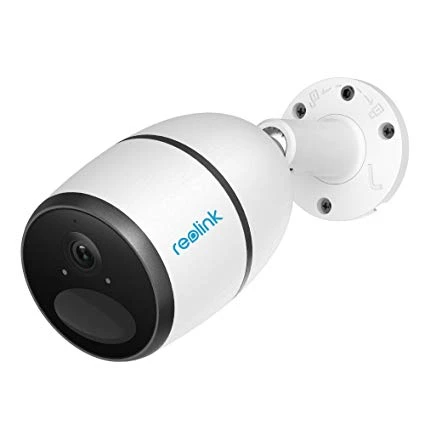
Reolink has almost everything you want in a wireless camera - starlight night vision, two-way audio, 1080 full HD resolution, weatherproof enclosure, and long lasting rechargeable battery. With its features, Reolink cam is your ideal cam for outdoor surveillance. You can even add a solar panel accessory so you won’t have to worry about the batteries, especially when you’re away.
Pros:
- Easy installation
- 4G enabled
- Comes with built-in PIR sensors for motion detection
Cons:
- No WiFi option
- May not work in areas with weak 4G signal
YI Outdoor Camera
Price: $79.99
Review: 3.9/5
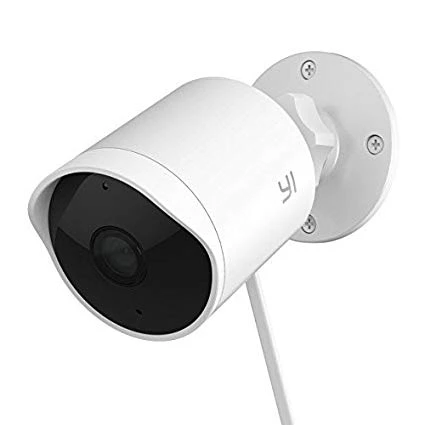
If you are looking for an outdoor camera that comes with great features packaged in a stylish casing, then the YI Outdoor camera could be the one you’re looking for. The camera is enclosed in a dust-proof and weatherproof housing to withstand harsh environment. And, it offers 110 degrees wide angle and 1080 HD resolution so you can get good video quality. You can even record at night time for up to 50 feet.
Pros:
- Two-way audio
- Night vision up to 50 feet
- Offers 1080 HD resolution
- Cloud storage through 2.4G network
Cons:
- Zooming results to blurry images
- Motion-triggered video can be recorded up to 6 seconds only
Arlo Go
Price: $359.89
Review: 3.2/5
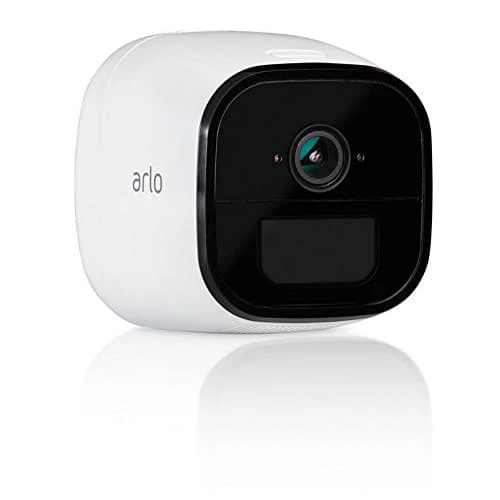
The Arlo Go by NETGEAR allows you to access a live footage of your properties anywhere in the world with 4G network. The camera is enclosed in a metal casing which makes it weatherproof for outdoor installation. The camera works with IR night vision, video recording triggered through audio and motion, and a local storage using an SD card. You can also power up the cam using rechargeable lithium-ion batteries.
Pros:
- Works with 4G-LTE
- Comes with IR night vision
- Notifications alerts to check sensor functionality
Cons:
- Motion sensors can be overly sensitive
- Limited local storage
Nubo
Price: $249
Review: 3/5
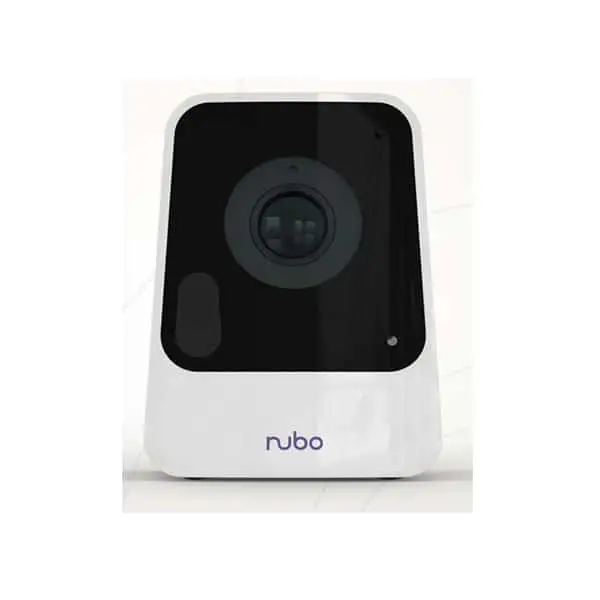
The Nubo LTE camera is a product designed by Panasonic. Not only can you connect it to 2G/3G/4G but also to a WiFi signal whenever it’s convenient, providing you options. Due to its flexibility, you can install the camera both for indoor or outdoor surveillance. Nubo also comes with a free mobile package with 3 months worth of free data and cloud storage. But you will need to decide whether to get a subscription or not after the free package expires.
Pros:
- 2G/3G/4G and WiFi enabled
- Ideal for indoor and outdoor installation
- Provides free mobile data and cloud storage for 3 months
- Comes with built-in motion detector
- Offers two-way communication
Cons:
- Need to purchase a subscription plan
- Doesn’t come with external batteries
Camscura WiFi B-Link Secure Cellular Camera System
Price: $269.99
Review: 2.4/5
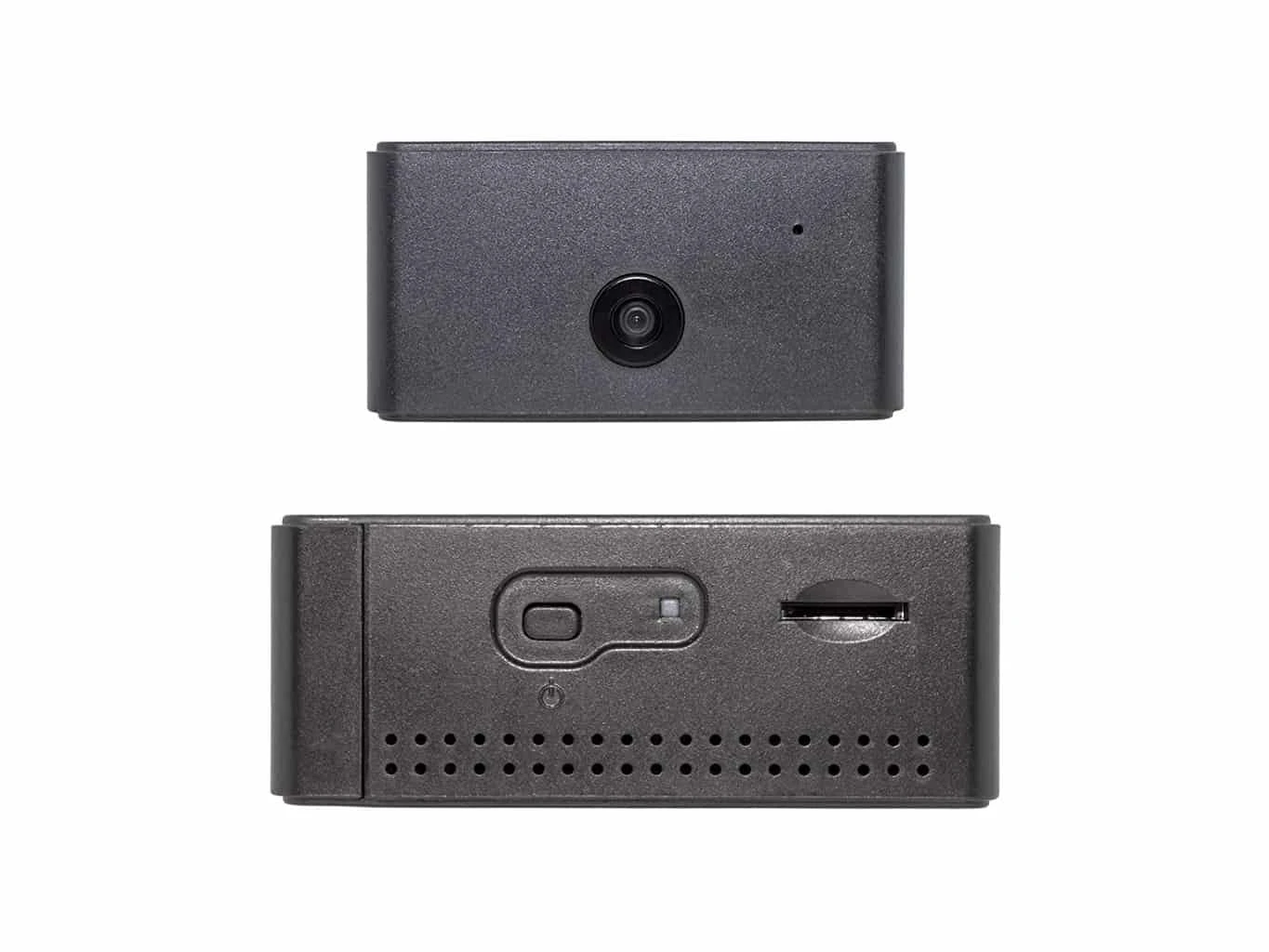
If you’re looking for a low-cost cellular camera, then the Camscura B-Link could be your option. The camera comes with a 32GB microSD to save your recordings and reduce data throughput, prioritizing video traffic to optimize your recordings. You can have options to receive alerts when its motion sensors are triggered too. A data plan with Camscura starts at $20 per month.
Pros:
- Built with IR night vision
- Low power consumption
- Easy to use for mobile monitoring
Cons:
- You need to activate the product before you can use it
- Doesn’t offer wide lens coverage
Mobotix
Price: $4000 to $5000
Review: 2.4/5
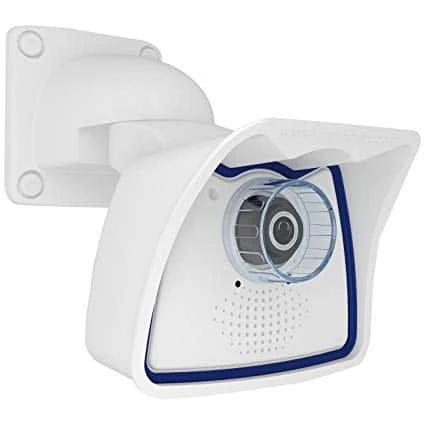
If you are looking for quality and not minding about the price, the Mobotix from Germany could be your best option. It features a 6-megapixel live streams even in dark areas thanks to its built-in moonlight day and night sensors. The cam is built with robust electronics design and solar powered system which is perfect for outdoor surveillance. Moreover, the camera also comes with a 256GB microSD, PIR motion sensors, microphone, and speaker for two-way audio. You can also have options to upgrade with accessories which may add up to its price. It can be costly but could be totally worth it if you are protecting something very precious to you.
Pros:
- 6-megapixel HD resolution
- Two-way audio
- Built-in with motion detection sensors
- Provides high resolution even on dark areas
- Robust and low-maintenance camera
Cons:
- Price!
Wrapping things up
Having a security camera at home can help you monitor your valuables remotely even while you’re on the road. However, there are a lot to choose from, each with its own pros and cons. Hopefully, this has been helpful. Let us know if you have any questions in the comments below!
References
https://internet-access-guide.com/an-overview-of-wifi-cameras-and-how-they-work/
https://blog.zonealarm.com/2015/02/how-secure-wifi-camera/
https://www.excitingip.com/2202/advantages-dis-advantages-of-wireless-ip-surveillance-cameras/
https://blog.cammy.com/advantages-disadvantages-wifi-security-camera
https://reolink.com/mobile-security-cameras-buying-guide/
https://www.electronichouse.com/how-to/choose-wireless-home-security-cameras/
Hi, I’m Christy, and I’m an electronics engineer by profession. I have taught in a university for 2 years while pursuing my master’s degree in cognitive radio and worked for a company to develop wireless medical devices. Currently, I’m doing research for a doctorate degree in engineering using a wireless sensor network for smart agriculture. I’ve been active in our local IoT community, IoT Cebu, where I participate in conducting talks about Arduino, Raspberry Pi, and DIY home automation using Wi-Fi and ZigBee devices.

